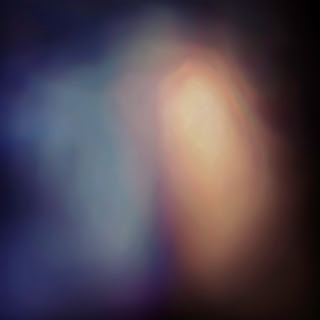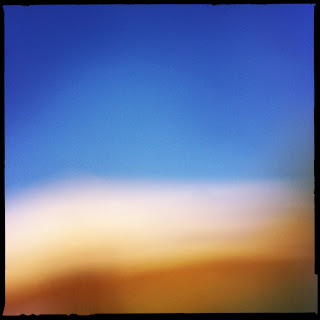visual musings
Monday, May 6, 2013
Sunday, April 7, 2013
Artist 8: the post-apocalyptic miniatures of photographer Lori Nix
the post-apocalyptic miniatures of photographer Lori Nix.
Beauty Shop, 2010
Church, 2009
Clock Tower, 2005
Laundromat, 2007
Library, 2007
Subway, 2012
Artist 7: the politically charged photo-collages of John Heartfield (Helmut Herzfeld)
the politically charged photo-collages of John Heartfield (Helmut Herzfeld)
One of the first to use photocollage/photomontage techniques to create works that served as political weapons, Artist John Heartfield (Helmut Herzfeld) created anto-nazi and anti-fascist works that were profoundly powerful, yet oftentimes extremely simple, political statements.
During the first world war, Heartfield changed his name from the germanic Helmut Herzfeld to the Anglicized John Heartfield as a means of protesting the Anti-British sentiment growing in Germany. in the early 1920s, Heartfield collaborated with George Grosz in experiments in the art of cutting and pasting photographic images together, later to be termed "Photomontage".
Heartfield was an active communist and pivotal member in the Dada movement in the early 20th century, working with such notables as Hannah Hoch, George Grosz, Marcel Duchamp, and Bertolt Brecht, and helped to organize major events such as the First International Dada fair in Berlin in 1920
Although he was well known for his stage-craft abilities, building numerous stark and somewhat minimal sets for fello Dadaists Erwin Piscator and Bertolt Brecht, it was through his work in Photomontage -his main mode of visual expression- that Heartfield established himself as one of the great artists of the 20th century. Best known amongst his work are the images that expose and criticize the hypocrisy and brutality associated with German Nazism. The montages he produced during the 1930s and 40s stand as some of his best known and highly celebrated work. A prolific producer, Heartfield's work appeared on the covers for Arbeiter Illustrierte Zeitung (AIZ, Workers' Illustrated Newspaper) from 1929 to 1933, a communist publication readily available on street-corner newsstands one whose circulation rivaled that of any other contemporaneous magazine/publication in Germany.
While he utilized rather simple techniques to create his montages, the reproduction for mass circulation of his images required the use of a technique called rotogravure, an engraving process where words, designs, and images are engraved onto a printing plate (or cylinder), lending his widely circulated images a unique aesthetic, unique unto itself, that was distinctly different from the original works the Artist produced. while the original images exist in extremely rare numbers, many of these reproductions, having been printed off in the millions, have managed to survive and are as highly sought after by collectors as the original montages themselves.
What I find most compelling about these photomontages is their simplicity; they aren't cluttered with imagery, many of them constructed from only two separate elements. The economic and minimal use of material, often sourced directly from state-run German publications, allows for images that are easy to read without the need for subtext. Often whimsical and amusing, Heartfield's profound and venomously critical work was an innovative use of materials and process that allowed the artist to quickly communicate complicated abstract concepts to a large audience of illiterate workers disenfranchised by the oppressive nazi regime.
Artist 6: the collage work of Romare Bearden
the collage work of Romare Bearden
Mother and child - 1971
The Calabash - 1970
Pittsburgh Memory - 1964
The Train - 1975
Mother and Child - 1971
110th Street Harlem Blues - 1972
While studying under the tutelage of Artist George Grosz at the Art Students League of New York in 1936-37, Romare Bearden developed a series of paintings depicting life in the American South in a style influenced by the Mexican muralists Jose Clemente Orozco and Diego Rivera. Around the same time, Bearden began a short-lived job working as a case worker for the New York Department of Social Services, interacting with the primarily African-American lower-classes of New York City. Between the years of 1942 and 1945 - during World War II - Bearden served in the US Army. After his initial experiences in Europe during the war, Bearden would later return to study philosophy at the sorbonne in 1950, a move that would have significant influence on his artwork, leading to a series of realistic paintings with religious connotations and references.
During the Civil Rights movement of the 1960s in the United States, Bearden began experimenting with alternative materials as a means to produce his progressive and socially-conscious collage works, utilizing the glossy and richly colored magazines of the time as source material to illustrate the progressive nature of modern African Americans. In 1964, Bearden exhibited a group of these works in a show he named Projections where he introduced his new collage style. The show was a success, and the style in which the exhibited work would ultimately be considered by many critics as his greatest.
Romare Bearden died on March 12, 1988 in New York due to complications with bone cancer, and the New York Times obituary referred to him as "one of Americas pre-eminent artists".
Of the works shown above, I think my favorite would easily be "Pittsburgh Memory"; the colors alone please me, with Bearden's selective use of warm tones creating a comfortable palette that is easy on the eyes that seems to soften the edges of his cubist treatment of the two faces in the foreground. This image is compelling, captivating, and compositionally keeps the eyes swirling through the center of the image. His use of various magazine clippings to create the two anonymous figures successfully creates an "everyman" identity where Bearden is attempting to represent an entire community through fabricated faces that have been reconstructed from fragments.
Sunday, March 17, 2013
Artist 5: "Dioramas" (1976) by Hiroshi Sugimoto
I find that I have a strong connection to the work of photographer Hiroshi Sugimoto, and find pleasure in that we share similar interests in dada and marcel duchamp. after reading a bit about his philosophy on photography and art, I can only draw similar conclusions about the medium; like sugimoto, I like to think of my artistic photography to be concerned with the transience of life and the human understanding of time, and a majority of my photographs seem to serve as capsules that neatly package emotional and physical memories into blocks of color and line, a physical means of storing thoughts and feelings that also relieves the artist of the burden of the vision.
Other elements of Sugimoto's work that resonate with me is the variety of imagery in his body of work, organized by themed series, and his seeming technical mastery of large format photography; his long daylight exposures are a testament to his ability to photograph both the natural and mad-made world.
Like the majority of his professional work, Sugimoto's Diorama photographs are carefully composed and extremely cinematic; instead of enhancing the artificiality of the museum display, the simple, hand-painted backdrops behind the figures serve to enhance the viewing experience, providing little-to-no distraction while gently guiding the viewers eye through the image and framing the subject(s) in their "natural" environment.
Of the series i've been able to see (mostly on the internet), I find his 1976 series Dioramas to be one of my favorite; his use of pre-existing, carefully crafted and composed museum dioramas is brilliant and testament to the artist's creativity and resourcefulness, and his soft, emotive black-and-white imagery seems to remove the artificiality of these museum settings to create compelling glimpses into natural history as if the viewer were somehow able to witness them firsthand. I find this use of "found material" to be highly amusing, and a creative response to the need to create the specific image (and satisfy the artist's inner vision of the world), and serves to tie the related, but separate, disciplines of sculpture, history, and photography into a single, cohesive experience for the viewer, unencumbered by "facts" and the "impossible" feat of photographing early homonids walking across the Serengeti.
Furthermore, the image of the polar bear and his freshly-killed seal is a captivating and compelling image that very few humans would be able to experience first hand, as the polar bear is one of the largest and most fearsome mammalian predators on the face of the earth, and even knowing that its a stuffed-and-mounted taxidermic specimen, i cant shake the level of hyper-realism and emotional/physical tension created by this image.
Other elements of Sugimoto's work that resonate with me is the variety of imagery in his body of work, organized by themed series, and his seeming technical mastery of large format photography; his long daylight exposures are a testament to his ability to photograph both the natural and mad-made world.
Like the majority of his professional work, Sugimoto's Diorama photographs are carefully composed and extremely cinematic; instead of enhancing the artificiality of the museum display, the simple, hand-painted backdrops behind the figures serve to enhance the viewing experience, providing little-to-no distraction while gently guiding the viewers eye through the image and framing the subject(s) in their "natural" environment.
Of the series i've been able to see (mostly on the internet), I find his 1976 series Dioramas to be one of my favorite; his use of pre-existing, carefully crafted and composed museum dioramas is brilliant and testament to the artist's creativity and resourcefulness, and his soft, emotive black-and-white imagery seems to remove the artificiality of these museum settings to create compelling glimpses into natural history as if the viewer were somehow able to witness them firsthand. I find this use of "found material" to be highly amusing, and a creative response to the need to create the specific image (and satisfy the artist's inner vision of the world), and serves to tie the related, but separate, disciplines of sculpture, history, and photography into a single, cohesive experience for the viewer, unencumbered by "facts" and the "impossible" feat of photographing early homonids walking across the Serengeti.
Furthermore, the image of the polar bear and his freshly-killed seal is a captivating and compelling image that very few humans would be able to experience first hand, as the polar bear is one of the largest and most fearsome mammalian predators on the face of the earth, and even knowing that its a stuffed-and-mounted taxidermic specimen, i cant shake the level of hyper-realism and emotional/physical tension created by this image.
Friday, March 15, 2013
Subscribe to:
Comments (Atom)













































